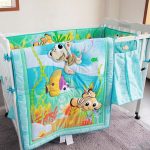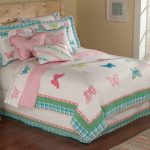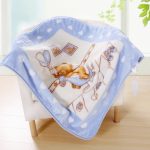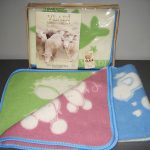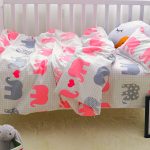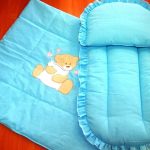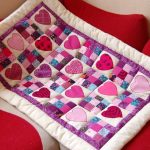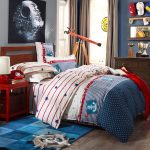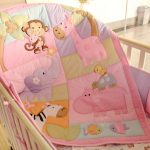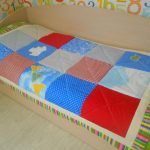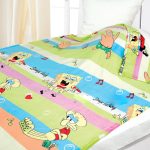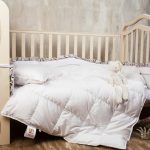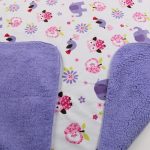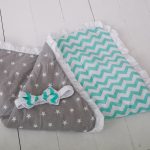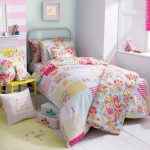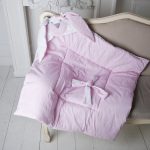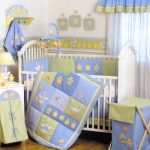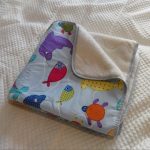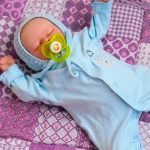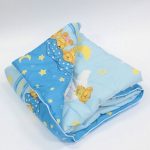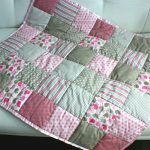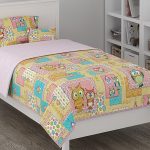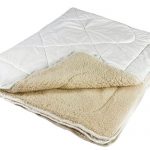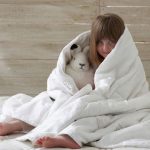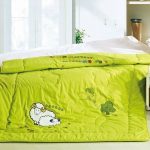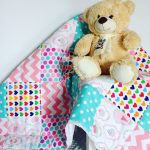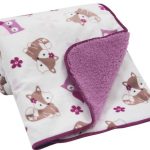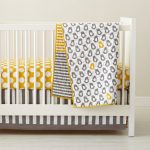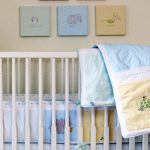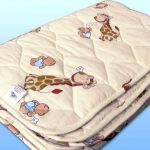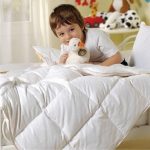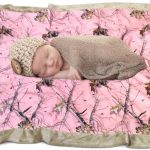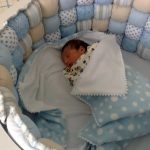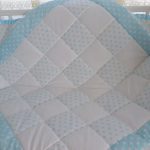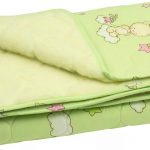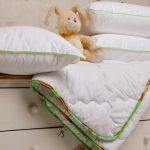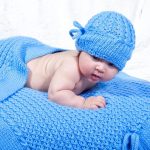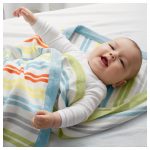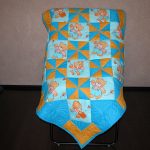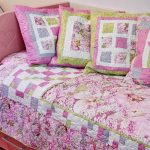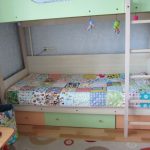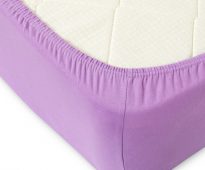 How to fix the sheet on the mattress so that it does not slip
How to fix the sheet on the mattress so that it does not slip
Baby blanket size
A baby blanket is one of the important details on the bed, and must meet many of the requirements in order to fully perform its functions. Oddly enough, but the size of the baby blanket and its composition affects the quality of sleep. So that the child can fully sleep, he needs to provide a comfortable environment, and for this to be able to choose the above parameters correctly.
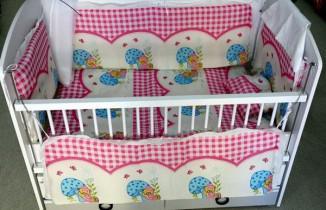
Choosing a blanket in the crib needs to be done correctly
Content
How to choose the right size
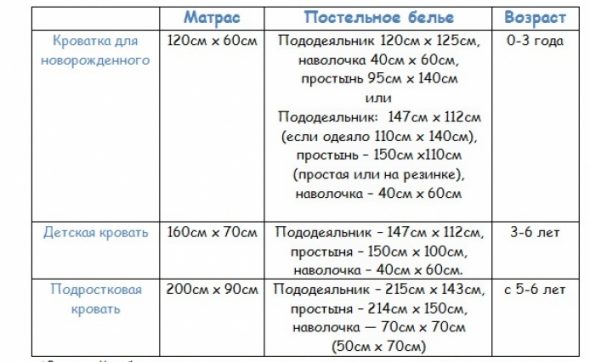
The approximate ratio of the size of children's bed linen and child's age
To get started is to wonder what to do to choose the right size of the blanket. It is advisable to approach the solution systematically, and build a specific algorithm. So you do not miss important factors, and can choose the perfect option.
You need to push off the size of the child. Measure its height, weight and volume. So, the blanket should not be too large, but should be 10-20 cm. Longer than height. The width is usually selected according to the length.
The described parameters are valid in the first place and for the selection of a good bed.
On a note!
That the blanket was correctly picked up, it is necessary to get a bed corresponding to the child's dimensions.
Suppose the bed is chosen correctly, taking into account the size of the child. Now we will build on the parameters of the bed. So, the standard blanket is equal to the length of the bed, and the width exceeds by 7-10cm. This option will not allow the product to slide off the bed, while it will be enough for comfortable use.
Why is it important
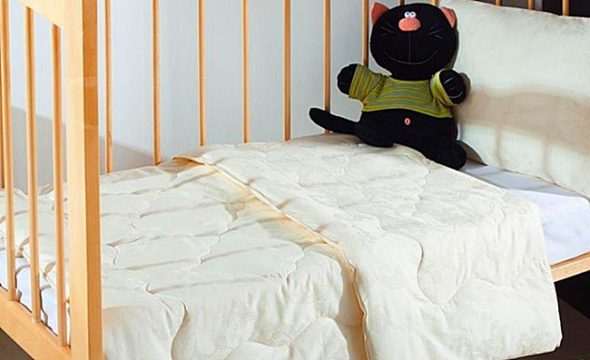
Buying the right baby blanket can make the difference between comfortable or uncomfortable sleeping baby.
Often, young parents overlook a factor such as choosing the right size for a baby blanket. But this should not be allowed, because inappropriate parameters can cause some discomfort. What happens when the wrong selection of dimensions.
- Difficulties in the selection of duvet cover. Often, the size of a children's blanket is selected individually, that is, measurements are obtained non-standard. Subsequently, there are difficulties with the selection of the cover, which leads to the fact that the blanket can crumple during sleep.
- Sliding blanket. Too small a product can fall out of bed, hanging down under its own weight. As a result, the baby’s sleep is disturbed.
- Does not fit in bed. This is also a disadvantage, and you should not take a baby blanket "for growth". If the product does not fit around the perimeter of the bed, it will crumple and interfere with normal sleep.
- The cover defectively covers the baby. This can occur when it is too small, and when the baby is spinning in a dream, it slips off of it, leaving it open.
As you can see, this factor should be taken into account, otherwise the appearance of some discomfort and sleep disturbance is guaranteed. But this issue should be approached with preparation, and take into account various factors that influence the choice.
Different factors affect size selection.

Table of standard sizes of children's blankets
To make a successful purchase, you must consider some criteria. They will help to more accurately determine the model. We picked up the main factors that need to be considered.
| Criterion | Options |
| Age | For:
|
| Material | The most common:
|
| Design | It varies depending on colors and prints. |
Now you can take a closer look at these criteria so that you can easily determine what you need.
For each age their own standards
The first criterion is age. Accordingly, this factor is an indicator of size. Often a baby blanket is indicated by age. Therefore, you need to know for what age which parameters are offered, and if your requests do not correspond to the proposed measurements, choose a different age category.
Newborns
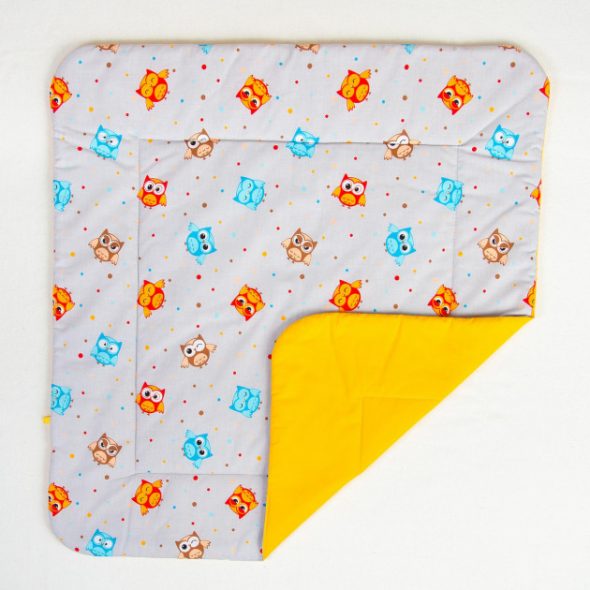
Baby square blanket with owls for a newborn
Blanket size for newborns is usually standard. If you purchase an envelope, in expanded form it will be 80x80cm. The envelope is the best option. It has already selected the optimal length and width, and after discharge you can use it as a bedspread for a baby cot.
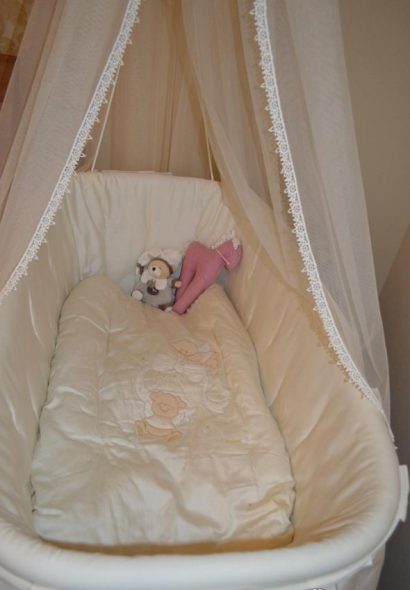
Small blanket for a baby cradle
There are also envelopes 60x60cm and 100x100cm. The choice depends primarily on the parameters of the baby. It should be noted that the standard envelope in 80x80cm cannot be used for a cradle, because its width is 40 cm. If you plan to place your child in a cradle before buying a baby cot, it is better to choose the smallest envelope. But, in general, the newborn can be immediately placed in the crib.
Preschoolers
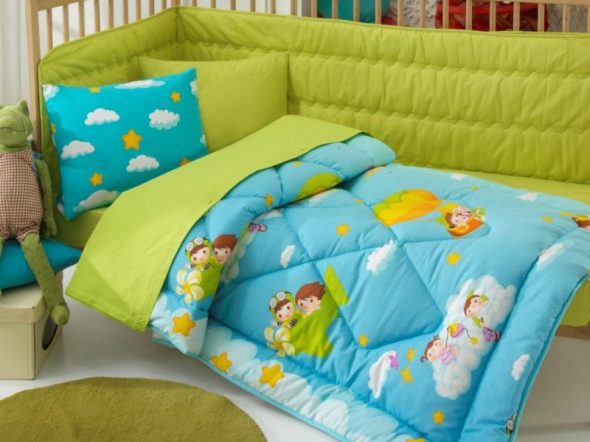
Blanket for children sinteponovoy with a substrate suitable for preschoolers
If you chose an envelope 60x60cm or 40x40cm, then the preschooler will be uncomfortable under it: for him such a product is already too small. In this case, you must purchase a new one, 80x80cm in size. This is the optimal size for children aged 3 to 6 years. If you see the designation on the blanket "3-6 years old", it is intended for preschoolers, and has the above parameters.
Now you can determine that, for obvious reasons, it is better to buy an envelope for discharge in sizes from 80cm on one side. However, everything is individual, and if you plan to purchase a cradle, give preference to a different size, otherwise problems may arise, as indicated above.
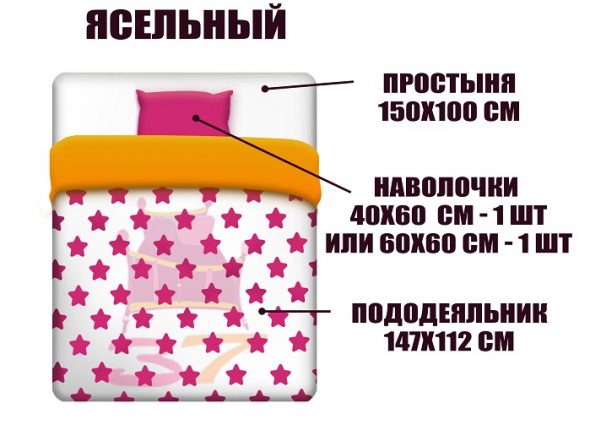
Clear bedding set with sizes
Junior high school students
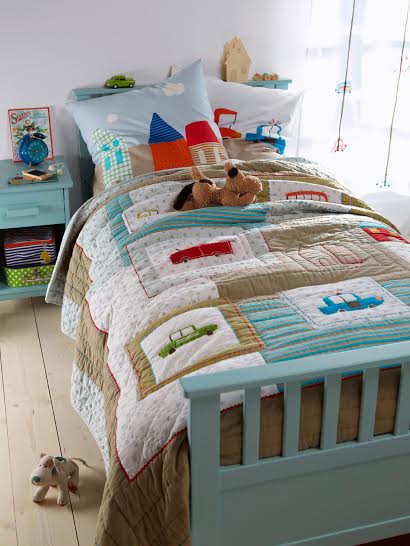
Coverlet - a blanket for a bed of the boy school student of "Machine"
The child grows, especially quickly this process occurs in the time of elementary school. Accordingly, at the age of 6-7 years, you will have to change the baby blanket, since the previous one will obviously become small. Now pick up the product from 100 cm. Depending on the height and volume of the child.
On a note!
When choosing, not only growth is important, but also volume measurements.
For younger schoolchildren, a thing can remain square and have parameters of 100x100cm. Or you can choose a rectangular 100x80cm. This option is also considered optimal. The width in this case depends on the size of the child, the size of the bed and the style of sleep. If the child tosses a lot, it is better to pick up a square cover.
Students
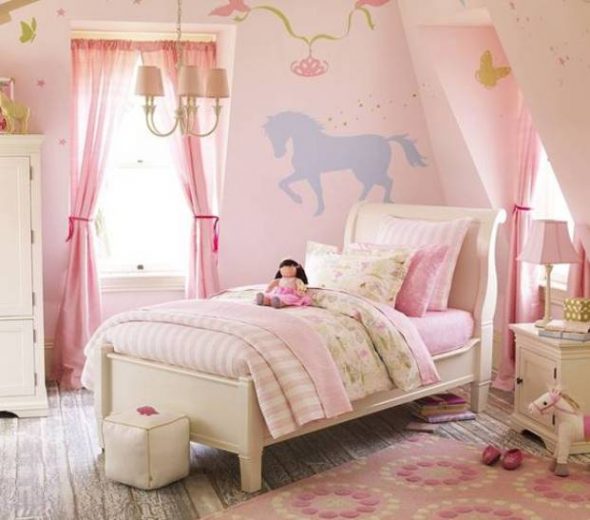
Crib with a beautiful bed and a suitable blanket for a girl schoolgirl
At the age of 10 years bedding dimensions should be changed. The width of the product in this case is 100-110cm, and the length increases to 140 cm. But, it should be noted that this item should be replaced when you notice that the child is uncomfortable under it, and o has become small for him. Perhaps for a student suitable format 100x100cm.
On a note!
The frequency of replacement of the blanket affects the growth rate of the child, regardless of age.
Standard for schoolchild 100x140cm. But if he is not comfortable, pick an option 100-110 cm in width by 120 cm in length. Such parameters are also available in textile stores.
Teenagers
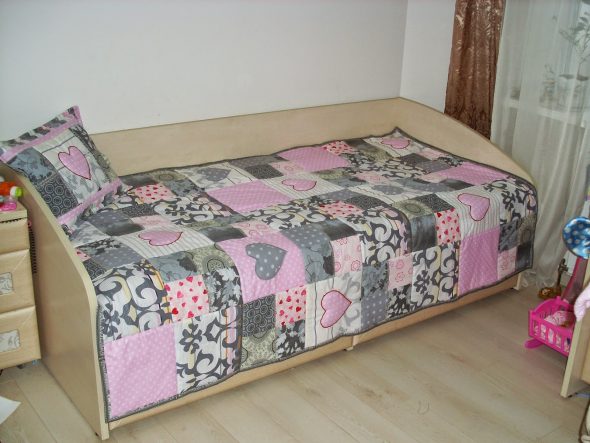
Handmade quilt for teenage girl
A blanket 140x100cm is suitable for a teenager, but if he has already grown out of him, get the usual one-and-a-half. Its name corresponds to the size, that is, its length is 150 cm. Width is 100-110cm, depending on the model.
The second option is more rational. Acquiring a high quality queen-size blanket for a teenager, you can not worry about its durability, since such a product can also be used in adolescence.
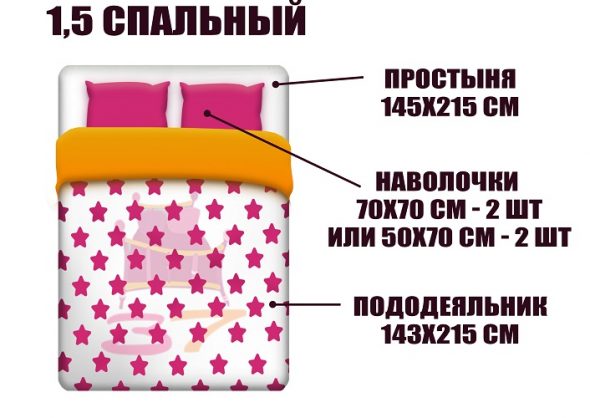
1.5 bedroom set is suitable for older children, when the children's version is no longer suitable
Non-standard options

Do-it-yourself quilt and bed set for the baby bed to your desired size
In addition to the above, there are non-standard models. They are designed for beds of unusual size or shape. And also depend on the individual parameters of the child.
Non-standard option is more difficult to find in the mass sale. In this case, you will most likely have to sew it to order. However, some models you can find. So, in the market there are products formats 100x118cm, 100x125cm, 100x135cm. Recently, more and more non-standard forms appear in the stores, so the chances of finding a suitable option, without asking for help in the atelier, are increasing.
We select the material
In addition to the dimensions it is worth considering the material of the product. This is a very important factor. Indirectly, it also affects the selection of size, because certain fabrics tend to sit down after washing. Moreover, the material of manufacture has a direct impact on the sleep of the child, so it can not be overlooked.
Biking

Gentle and soft flannelette blanket is harmless and environmentally friendly and suitable for both newborn and older children.
Let's start with natural materials. They are hypoallergenic, so are great for children.
Duvet covers are quite common. They are great for wrapping crumbs in a stroller while walking in the fall or on cold summer evenings. In this case, the product must be compact. It is worth noting that its thickness of 5mm makes it as convenient as possible for use outside the home.
This material is used during tailoring bed for different age groups. It is quite warm, but not suitable for the winter period. Excellent breathable and absorbs moisture. With such a blanket your crumb will always be dry during sleep.
Downy
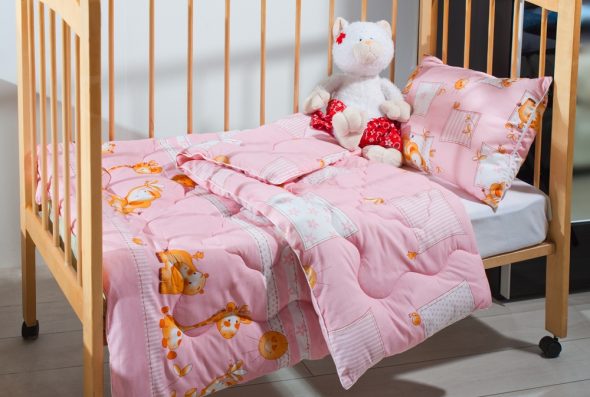
Duvets are among the most pleasant and cozy among many other varieties.
With this view you need to be careful. For the smallest it is not recommended to use it. Bird fluff, which is a filler, easily attracts dust. As a result, a dust mite can start there, causing various allergic reactions. For a stronger body, it does not constitute a big danger, however, for newborns and younger schoolchildren, it is better to replace fluff with safer materials.
But this option has some positive aspects. Pooh is perfectly breathable and does not allow the child to sweat a lot. Its greatest advantage is the ability to perfectly retain heat. This option is perfect for cold winter walks.
Cotton
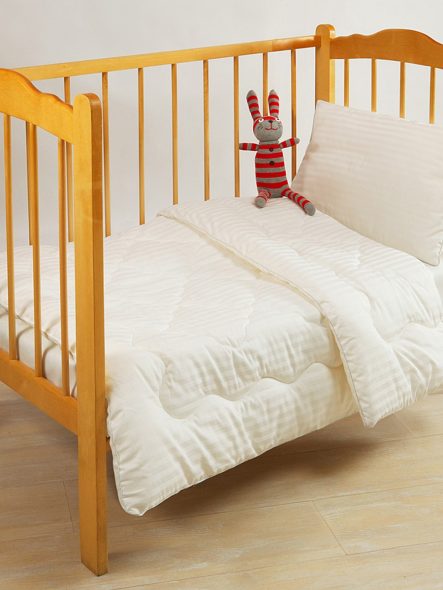
Quilt - not the most comfortable and cozy type of blankets, as it weighs a lot, absorbs odors, moisture
Another warm option. This is a good alternative to downy. Cotton wool filler has similar parameters, since it has excellent breathability, hygroscopicity and retains heat well. But, unlike the previous one, it does not tend to accumulate a lot of dust. As a result, it is not a medium for breeding adverse bacteria and dust mites.Thus, natural cotton filler is a hypoallergenic material that is perfect for warm bed linen of any child age category.
Bamboo
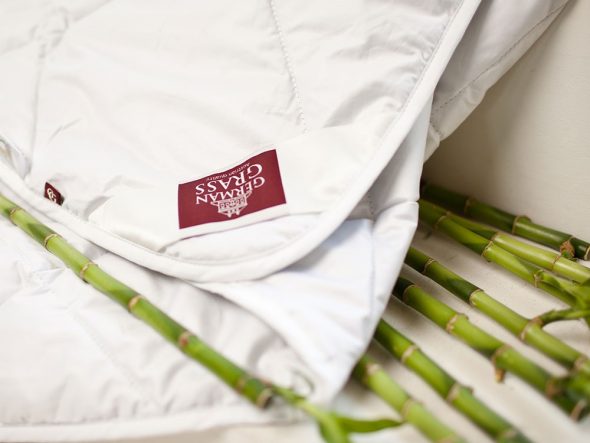
An unusual option - a blanket made of bamboo, good because it is anti-allergenic and anti-bacterial
It is a quality material that is hypoallergenic and even has antiseptic properties. It is preferred for children with a weakened immune system and a tendency to allergies.
A bamboo thing has an excellent “breathing effect”, does not accumulate extraneous odors, and at the same time has its own unique aroma, which has a soothing effect on the nervous system of the baby. This type does not require special care, does not shrink after washing and does not get off during it.
Woolen
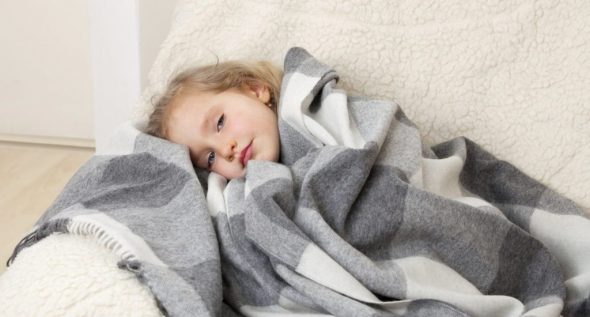
Woolen blanket is one of the best and most qualitative of its kind, as it saves heat very well and is very comfortable and soft.
Natural things made of wool have long been valued. They perfectly accumulate and retain heat. Camel or sheep wool, used as a filler, has its own energy. Woolen blankets are usually made in the form of a rug, but there are models with a woolen lining. For the child, the second option will be more acceptable. Wool products tend to electrify, prickly to the touch, so their contact with open skin is better to limit.
Fleece
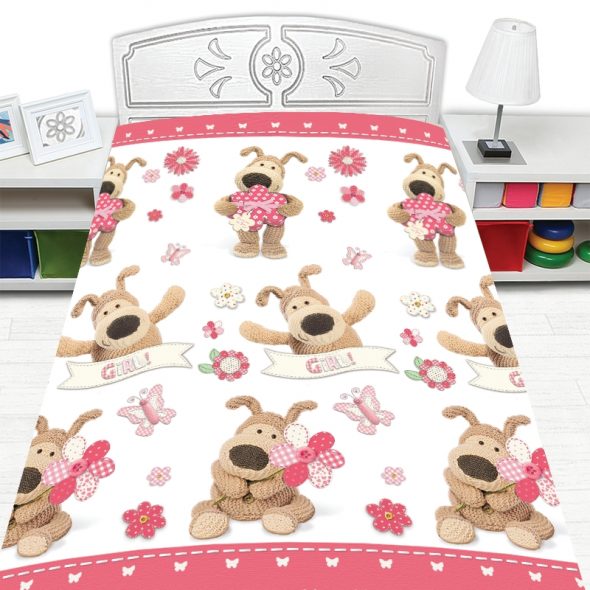
A fleece blanket is made of synthetic knitted polyester fabric, very warm and pleasant to the touch.
Fleece has a good fiber texture and is very soft. This is a great option for any age categories. However, you should use a fleece blanket carefully, and prevent the child from sweating under it, due to the low hygroscopicity of the base. Air also does not pass this material very well.
This option is suitable for cold winter walks, as it perfectly retains heat, but does not "breathe."
Pay attention to synthetics
Usually, natural materials inspire confidence, and are most often used for sewing various children's textiles. However, they also have negative sides, they can cause allergies, accumulate dust and static electricity. Therefore, you should pay attention to high-quality synthetic fillers.
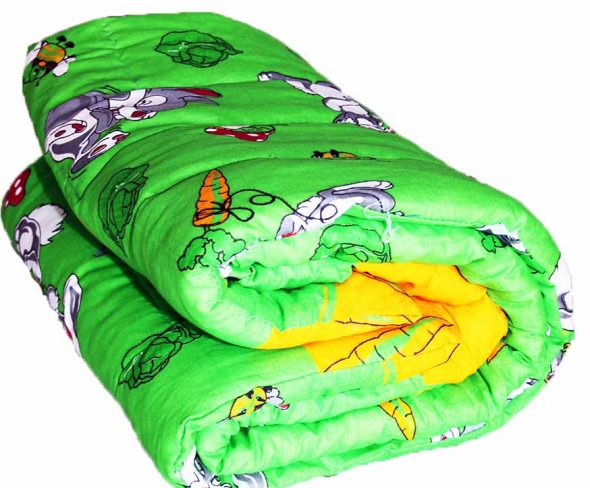
Sintepon - the most famous and most common material, but it is badly breathable and quickly deteriorates from washing
The most common is sintepon and holofiber. They have good air permeability, retain heat well. Such materials are hypoallergenic and have long become a full-fledged replacement of natural fillers. There are many other variations of synthetic bases for children's textiles.
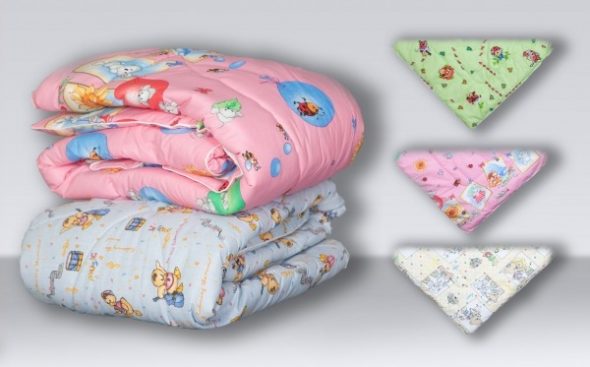
A children's blanket made from high-quality holofiber will last longer and be better in quality.
We select the design
Now about one more criterion that indirectly influences the selection of size. To begin with about the general provisions regarding design.
Baby blankets are full of various prints. Here and fabulous and cartoon characters, nature, flowers and various other drawings. Here a lot depends on age. Each period has its own print theme. It should be noted that psychologists do not advise to choose too bright textiles for the nursery, since it is exciting effect on the psyche of the child. It is also necessary to take into account the material that is applied print.
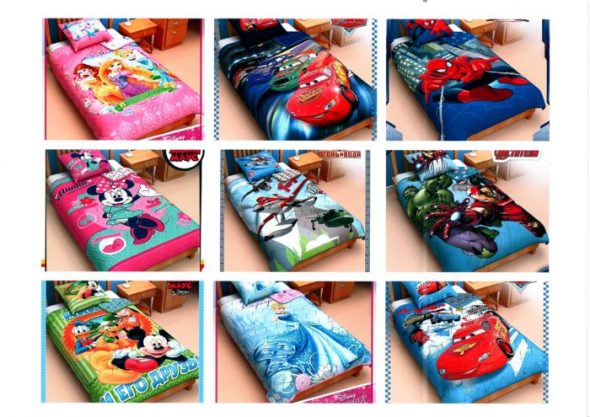
Baby blankets with your favorite cartoon characters
Important!
For drawing a picture, be sure to choose only high-quality paint.
The product can be decorated with your own hands, making embroidery, adding fringe. Here it is necessary to take into account its parameters so that the design does not prevent it from fully performing its functions.
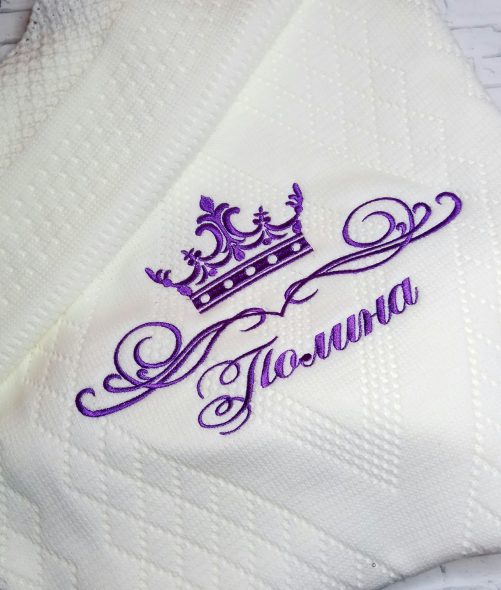
Baby blanket with personalized embroidery
Given the above criteria, you can choose the right baby blanket, and not be mistaken with the size.
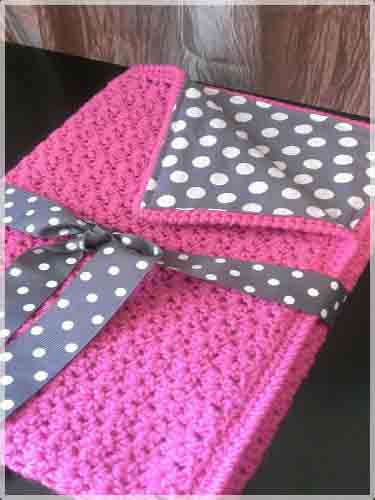
Reversible baby blanket with hand-knotted front part.
Video: Blanket for a newborn
Photo gallery of children's blankets of different sizes for children of different ages:
 How to fix the sheet on the mattress so that it does not slip
How to fix the sheet on the mattress so that it does not slip
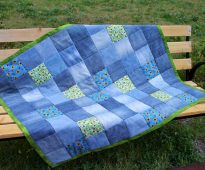 Patchwork veil of old jeans: do it yourself
Patchwork veil of old jeans: do it yourself
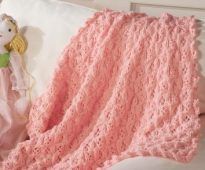 Knit children's blanket knitting
Knit children's blanket knitting
